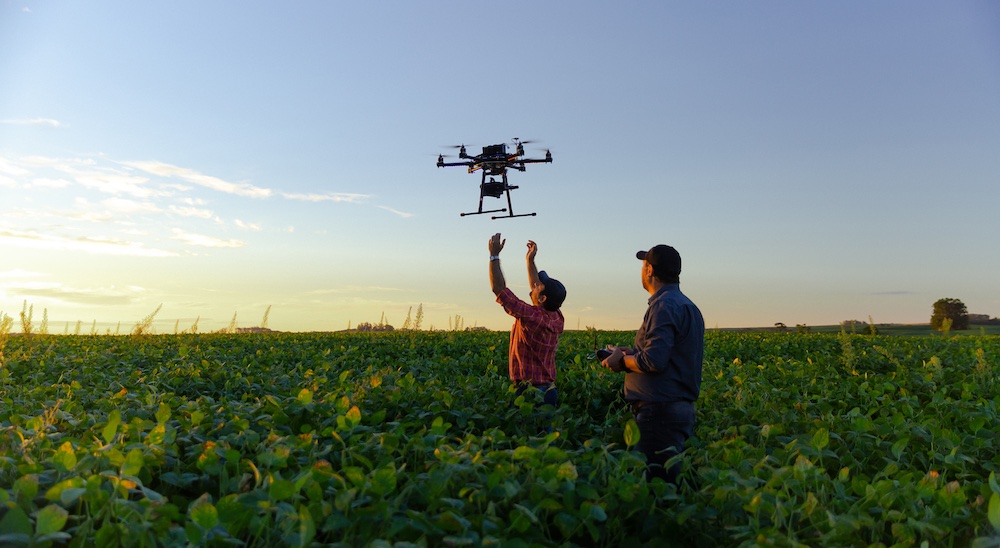Producers today face mounting pressure to adopt sustainable practices and digital innovations, but these shifts come with challenges—from costs to the need for targeted policy support and practical research.
To thrive, Canadian agriculture needs policies, funding, and resources that directly address the needs of the agriculture industry. To succeed, these efforts must be informed by the voices of the people on the ground – the producers that work to produce the crops and livestock we all depend upon.
Alberta’s agricultural sector emits 21 million metric tonnes of CO2 equivalent annually or about eight per cent of Alberta’s total greenhouse gas (GHG) emissions. Animal production is responsible for 64 per cent of those emissions, while crops contribute 21.5 per cent. Roughly 97 per cent of crop emissions are nitrous oxide (N2O) from synthetic and organic fertilizers, soil cultivation, tillage and manure management. Emissions from animal production arise mainly from enteric (within the gut) fermentation of cattle and biomass decomposition.
As Alberta supports its agriculture industry, it must also work towards reducing emissions in line with Canada’s climate goals. Meeting these goals may require changes in food production practices with associated costs.
The challenges of change
A Simpson Centre policy brief synthesised the findings of Government of Alberta’s 2021 carbon Program initiative, whose aim was to evaluate environmental practices and greenhouse gas reduction strategies in the agricultural sector.
The effects of climate change are not uniform across the nation’s diverse regions. In Western Canada, the anticipated warmer climate suggests longer growing seasons and a wider range of viable crops while also threatening more extreme weather along with increased pest and disease risks for crops and livestock.
The Simpson’s Centre’s research revealed a number of challenges faced by producers in emissions reduction:
- Uncertainty around emission levels.
- Effectiveness of proposed best management practices (BMPs) for emissions mitigation.
- Accuracy of emissions measurement methods.
- Lack of clarity on who pays to implement strategies.
- More information on enhanced efficiency fertilizers in dryland production systems.
- Uncertainty about the yield benefits of certain BMPs.
- Concerns about the environmental trade-offs of polymer-coated fertilizers.
- Availability of information about emerging technologies.
- Lack of adequate internet infrastructure and resource allocation.
- Practical demonstrations of adoption benefits.
- Effectiveness of top-down federal policy as opposed to an inclusive bottom-up approach.
- Labour shortages and equipment costs.
Addressing such questions and uncertainties is crucial to advance adoption of effective emissions mitigation strategies across the province.
What should we do?
The research identified various strategies to encourage adoption of emission reduction BMPs:
- Ensure enough profit for producers, potentially through the sale of carbon offsets, to cover additional costs and incentivize BMP adoption.
- Provide a detailed approach to accurately measure the impact of best BMP adoption on greenhouse gas emissions.
- Reconsider fertilizer emission reduction targets and replace broad fertilizer reduction goals with specific, more achievable BMP adoption targets.
- Align federal funding with provincial and farmer-level initiatives to aid implementation.
- Design federal and provincial carbon protocols to ensure the practices and standards for carbon management are consistent with what farmers are implementing .
- Enhance support for sector-specific research and extension services to add to producers’ understanding and implementation of BMPs, e.g. the impact of the methane production inhibitor 3-nitrooxypropanol in the feedlot sector.
We need your help
Better data helps producers, input providers, processors, distributors, investors, innovators, consumers and policymakers improve collaboration and make more effective decisions.
Effective progress on national and global emissions reduction requires direct experience and knowledge of producers. This principle is the foundation of the Alberta Digitalization Agriculture Program, generously funded by the Alberta government to identify challenges and opportunities for digitalization of Canada’s agriculture.
A better understanding and management of data-driven agricultural technology (AgTech) means increased productivity and sustainability, as well as more predictable ROI and cost savings across the sector. We are asking you, as producers in Alberta, Manitoba and Saskatchewan, to give us your thoughts on digital agriculture, its challenges, its benefits and how it could be more widely adopted. Your expertise and insights will help shape policies to make tech adoption more practical, affordable and beneficial for agriculture. We hope you will add your voice to the discussion with this 15-minute survey.

Who we are
The Simpson Centre for Food and Agricultural Policy at the University of Calgary is a policy accelerator and a knowledge broker for agriculture and agri-food. Our vision is to become the trusted advisor and moderator for policymaking on agriculture in Canada: a connector among government, academia and the private sector.
Our research focuses on three key areas: 1) Agriculture and Society (population health and environment), 2) Agriculture and Economics (sustainable productivity), and 3) Agricultural Literacy (public education and outreach).
Our research is neutral and evidence-based with the aim of connecting researchers, citizens, industry stakeholders and government actors to scientific issues critical to the future of Canada’s agricultural and food system.










